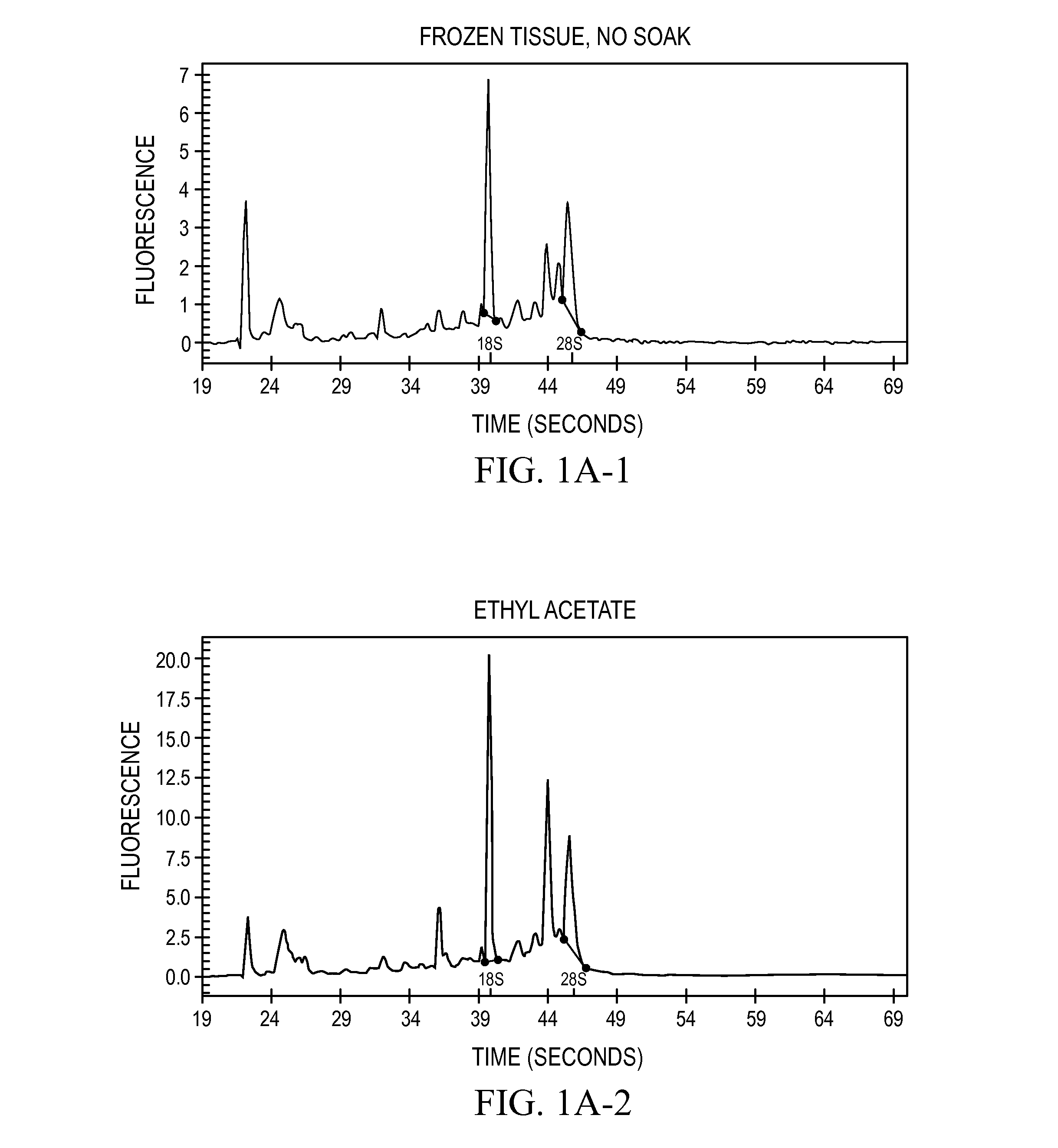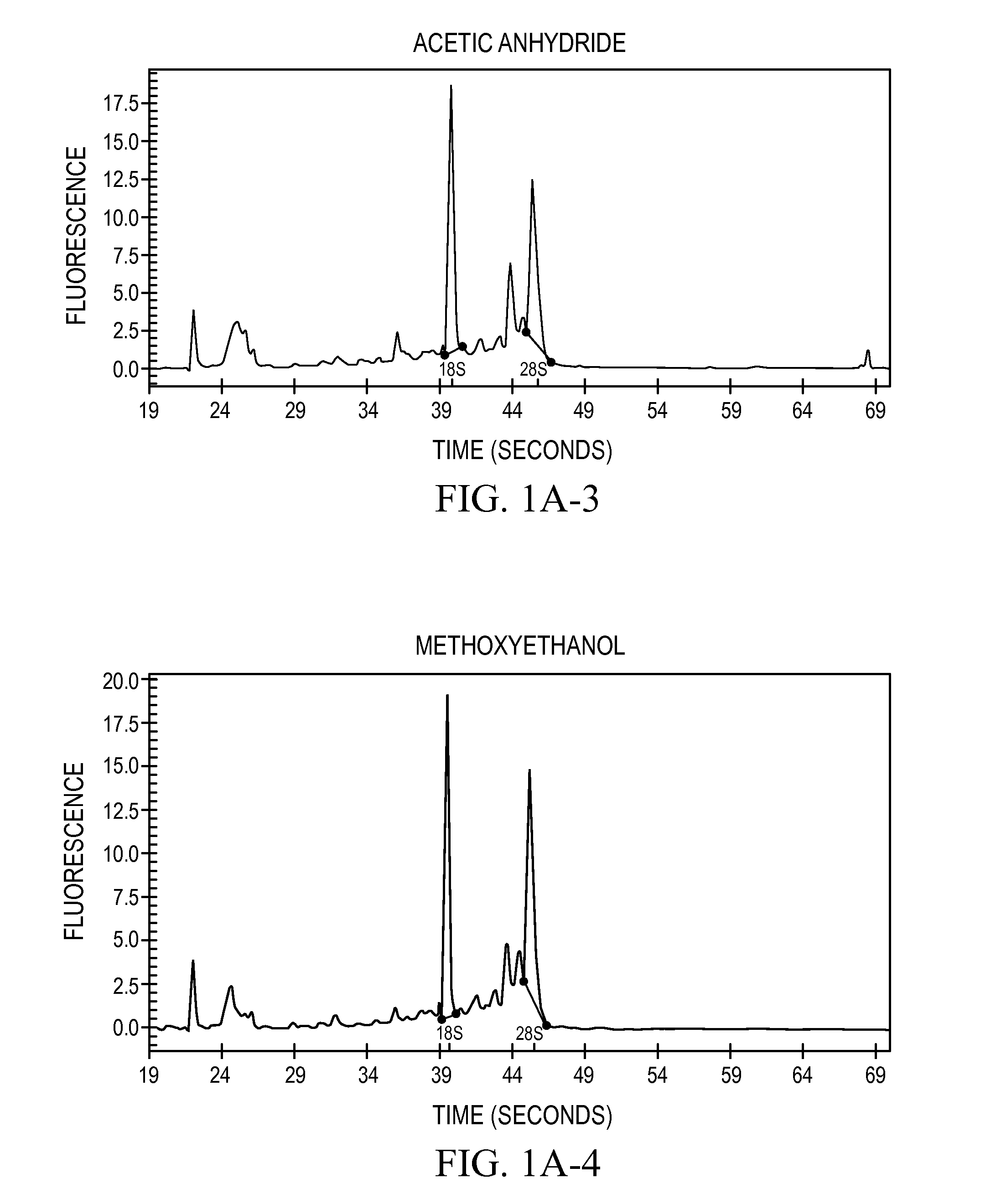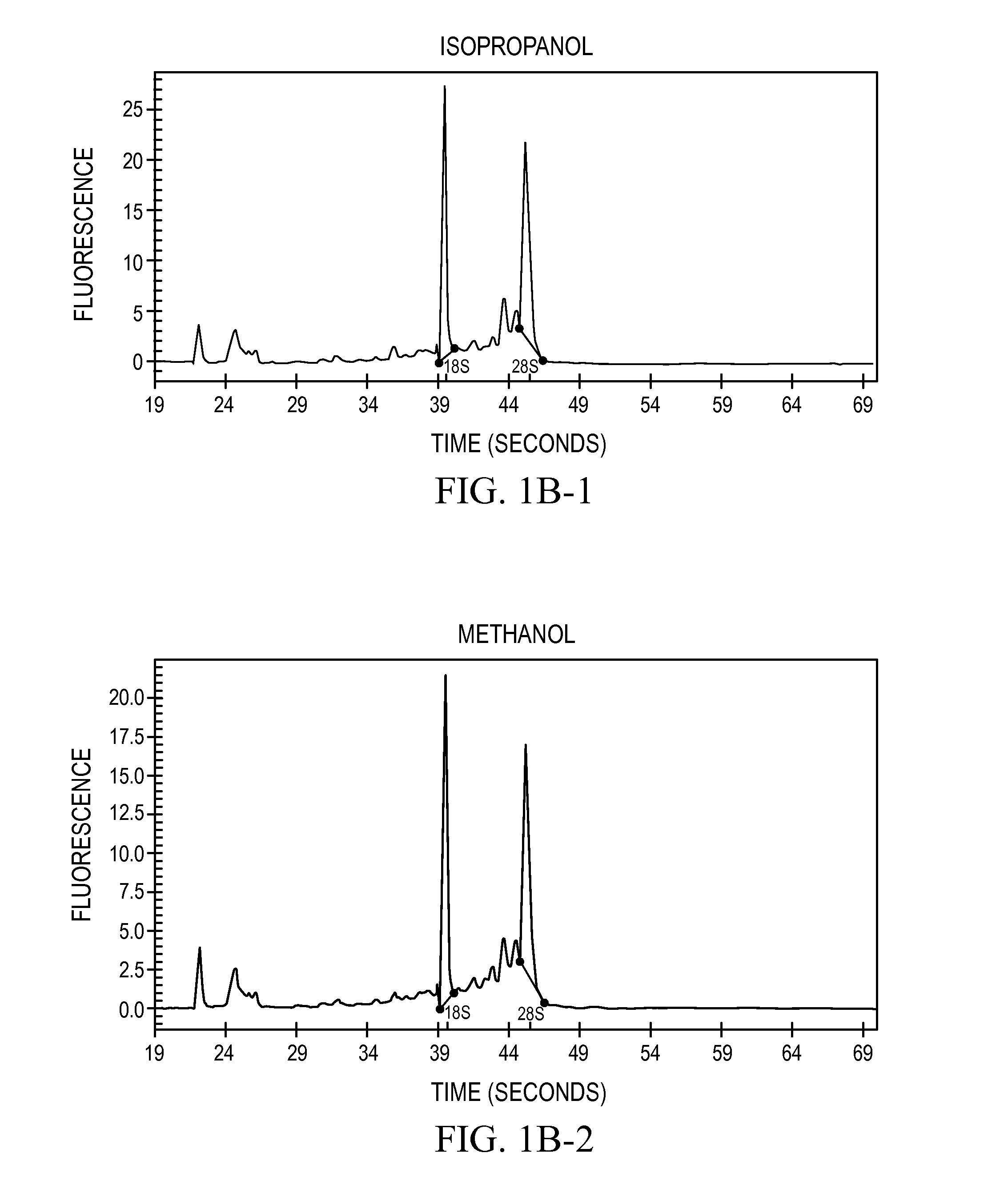Compositions and methods for preserving RNA in biological samples
a biological sample and composition technology, applied in the field of cell biology and molecular biology, can solve the problems of inability to address the other stages at which degradation may occur, inappropriate degradation of rna by components normally meant to remove older or inappropriate rna molecules, and the more problematic process of rna degradation, so as to reduce the activity of these enzymes, facilitate their isolation, and maintain the integrity of macromolecules.
- Summary
- Abstract
- Description
- Claims
- Application Information
AI Technical Summary
Benefits of technology
Problems solved by technology
Method used
Image
Examples
example 1
Process for Isolating RNA
[0070]Tissues were from Swiss Webster strain mice that had been dissected and quick-frozen in liquid nitrogen by a commercial supplier (Pel-Freeze, Rogers, Ark.). RNA samples were isolated from the indicated tissues after the treatments described using a dual-phenol-chloroform extraction (the Totally RNA™ kit, Ambion, Inc.). After the tissue samples were treated as described, they were dropped directly into homogenization solution (4 M guanidinium thiocyanate (GuSCN)), 25 mM sodium citrate, pH 7.2, 0.5% N-lauroyl sarcosine, 100 mM β-mercaptoethanol) and homogenized with a rotor-stator type homogenizer at high speed for 30 sec. For each experiment, a control sample of frozen tissue was processed similarly by dropping the chunk of frozen tissue directly in the lysis buffer and homogenizing until a uniform consistency was realized. RNA was then extracted from this mixture by using two sequential phenol-chloroform extractions as prescribed for the Totally RNA™ p...
example 2
Criteria for Analysis of RNA To Determine if it is “Intact”
[0071]Assays on RNA are routinely performed to assess the intactness of such samples. The degree of intactness was used to gauge the quality the RNA recovered from tissues that had been transitioned in the treatment solution and compared to RNA samples isolated directly from frozen tissue.
[0072]The RNAs prepared from each sample were analyzed by electrophoretic systems. When RNA degradation occurs, the 28S breaks down faster than the 18S, so that the sharpness of the two rRNA bands and the ratio of 28S to 18S rRNA provides a good estimate of the RNA quality, with moderately degraded samples possessing a 28S band that is unclear or obviously in deficit to the 18S band (personal observations). The main electrophoretic system employed for analysis was glyoxal-denatured agarose gels (procedure described in Sambrook, 2001). Many of the samples analyzed by this system were also analyzed on a capillary electrophoresis system (Bioan...
example 3
Tissues in Various Solvents
[0073]Six solvents selected from the CRC Handbook of Chemistry and Physics were tested for their low melting point and miscibility with water: methanol, ethanol, isopropanol, methoxyethanol, ethyl acetate, and acetic anhydride. This set of solvents are all water-miscible and have melting points below −70° C., they are relatively inexpensive to produce. Also tested was a mixture of ethanol:methanol:isopropanol in a 18:1:1 mixture (“reagent alcohol,” cat #6590-1, Ricca Chemical Co., Arlington, Tex.). Mouse livers (from Swiss Webster strain mice, obtained flash-frozen from Pel-Freeze, Rogers, Ak., and maintained at −80° C. for three or more days) were placed directly into an excess of the solvent (greater than 10 volumes) at −20° C. and incubated in the solvent at −20° for 18 hr. After this incubation, the tissues were all rendered to a state resembling leather. The samples were removed from the solvent and placed immediately into a standard homogenization so...
PUM
| Property | Measurement | Unit |
|---|---|---|
| melting temperature | aaaaa | aaaaa |
| melting temperature | aaaaa | aaaaa |
| melting temperature | aaaaa | aaaaa |
Abstract
Description
Claims
Application Information
 Login to View More
Login to View More - R&D
- Intellectual Property
- Life Sciences
- Materials
- Tech Scout
- Unparalleled Data Quality
- Higher Quality Content
- 60% Fewer Hallucinations
Browse by: Latest US Patents, China's latest patents, Technical Efficacy Thesaurus, Application Domain, Technology Topic, Popular Technical Reports.
© 2025 PatSnap. All rights reserved.Legal|Privacy policy|Modern Slavery Act Transparency Statement|Sitemap|About US| Contact US: help@patsnap.com



